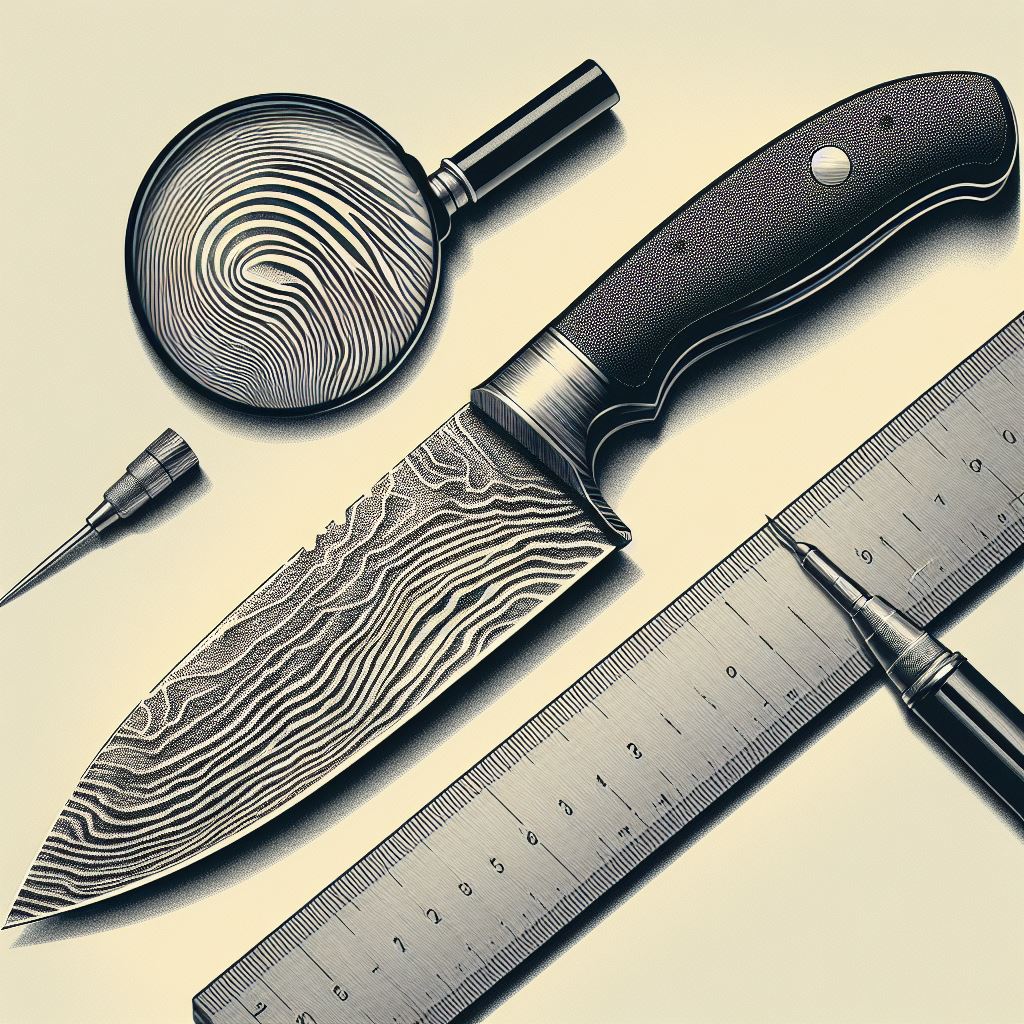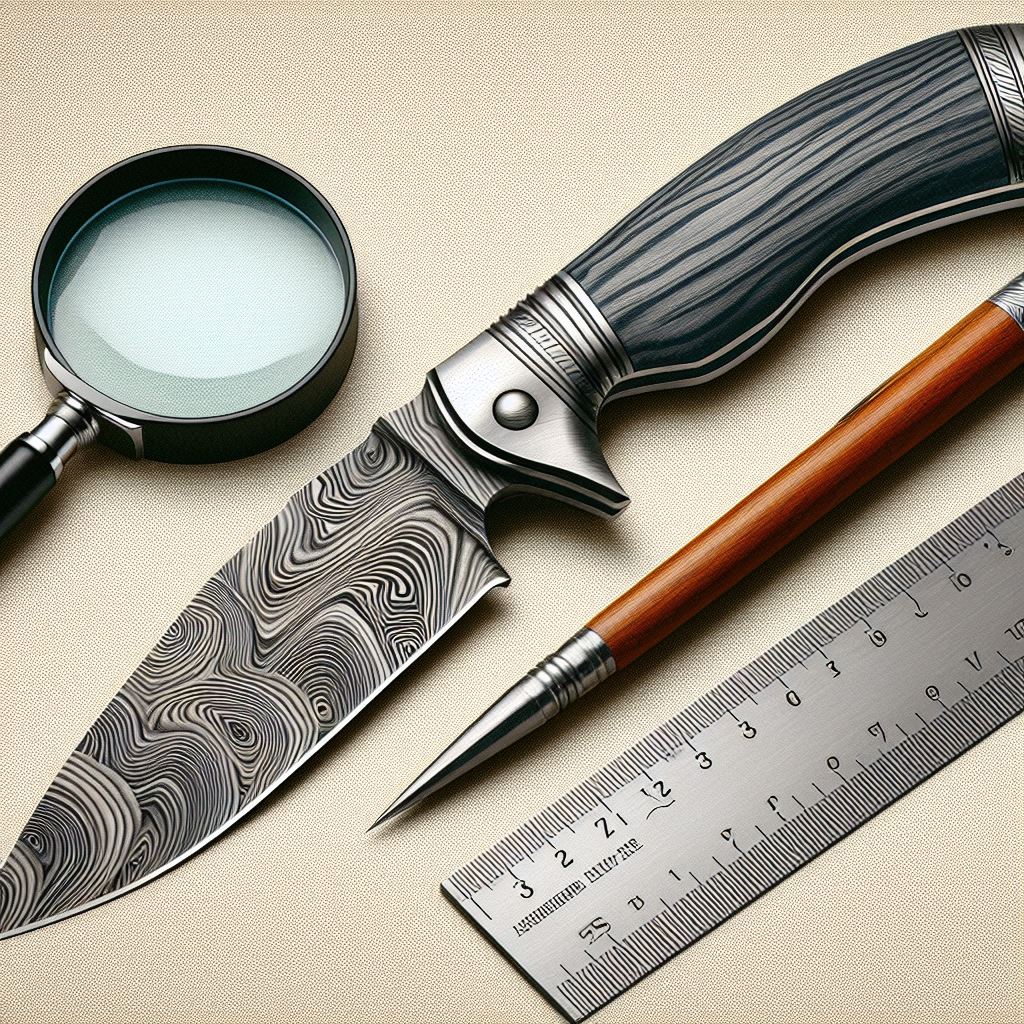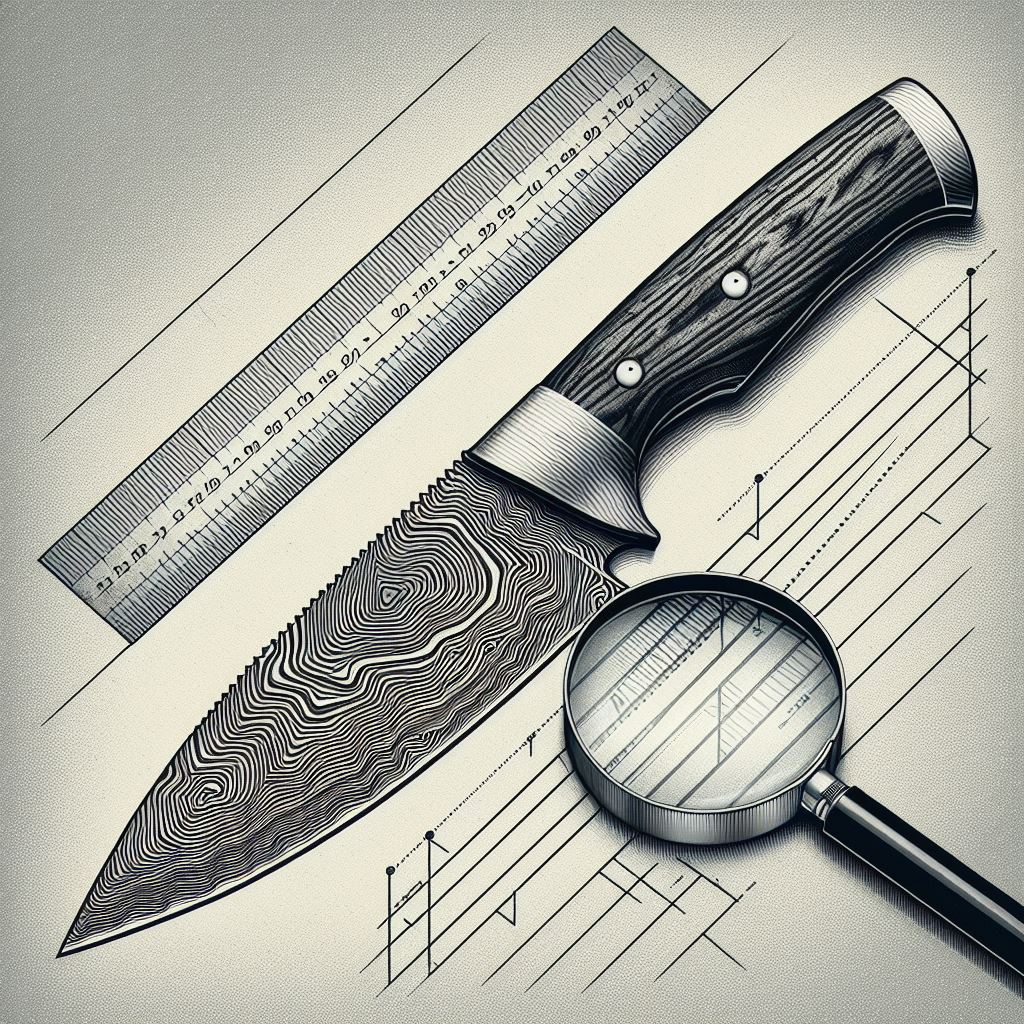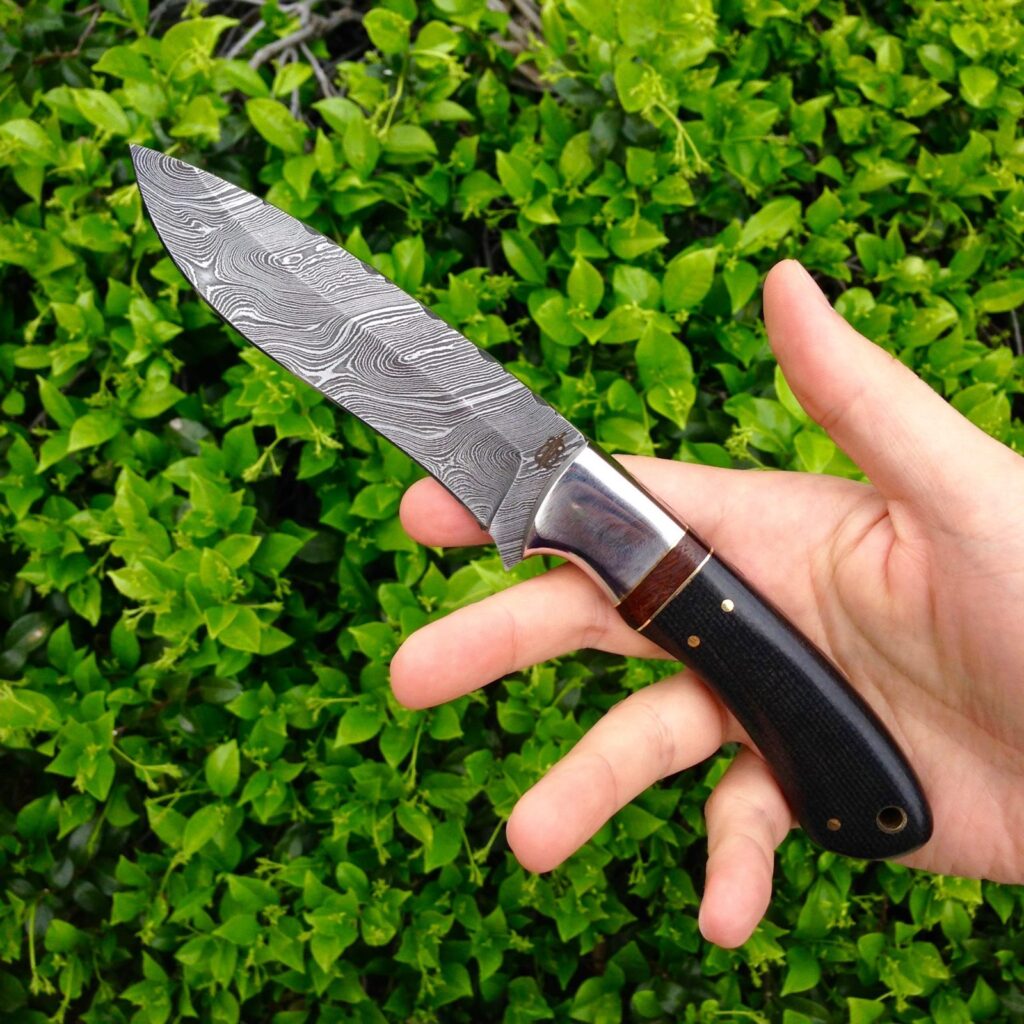To determine if a knife is real Damascus steel, examine its blade for patterns that continue along the edge and are consistent on both sides. Authentic Damascus steel features unique, wavy patterns that resemble flowing water.
Understanding the authenticity of Damascus steel is crucial for collectors and chefs alike. Damascus steel knives hold a prestigious reputation due to their strength, durability, and distinctive patterned designs. These patterns are not merely superficial but are forged into the steel itself.
Craftsmen create these legendary blades through a meticulous process of folding and welding different types of steel, resulting in their characteristic appearance. Spotting a genuine Damascus blade requires close inspection, and knowledge of these attributes can protect buyers from counterfeits. With their popularity, it’s no surprise that imitations abound, but true Damascus steel stands out for those who know what to look for.

Introduction To Damascus Steel
Damascus Steel carries with it not just the sharp edge of a blade but a slice of history. Known for its strength, resilience, and distinctive patterns, it whispers tales of ancient craftsmanship. Today, detecting true Damascus steel is a quest for enthusiasts and professionals alike.
Origins And History Of Damascus Steel
The tale of Damascus steel begins in ancient times. These blades were first crafted hundreds of years ago. The name links back to the Middle Eastern city of Damascus, a bustling hub of trade and craftsmanship. Damascus steel swords were renowned for their strength and sharpness. They could even bend without breaking and slice through a rifle barrel. This steel was not just metal; it became a symbol of mythic power.
Characteristics Of Damascus Steel
- Wavy patterns: True Damascus steel features distinctive flowing patterns, reminiscent of flowing water. These marks are unique to each piece.
- Strength: Known for its hardness, it maintains a sharper edge longer.
- Resilience: Flexibility is a hallmark—Damascus blades fare well against tough use.
The Confusion In Modern Damascus Steel Identification
In today’s market, distinguishing real Damascus steel from imitations is challenging. The original technique of making Damascus steel got lost over time. Many modern blades, while labeled as ‘Damascus’, are often just etched to mimic the pattern. Learning the keys to identify authentic Damascus steel is essential for any collector or craftsman.
Visual Indicators Of Genuine Damascus Steel
Welcome to a journey through the art of Damascus steel. True Damascus steel boasts unique traits. Knowledge of these traits will help you identify genuine Damascus steel. Let’s delve into the visual clues that distinguish authentic Damascus from its imitations.
Distinctive Pattern Recognition – Wavy Or Flowing Designs
Real Damascus steel displays a mesmerizing pattern. These patterns resemble wavy or flowing water. They are the result of repeated folding and hammering of steel. Upon inspection, the patterns should appear intricate and naturally formed. Features to look for include:
- Bold wavy lines
- Layered watermark effect
Consistency In Layering – Examining The Forge Work
Authentic Damascus steel reflects a craftsman’s skill. Look for consistency in the steel’s layering. Uneven or fake patterns suggest inferior quality. Genuine Damascus should show:
- Uniform layer distribution
- Smooth transitions between layers
Quality Of The Edge – Retention And Sharpness
The edge of a Damascus blade is telling. Sharpness and retention are hallmarks of quality. Signs of a genuine Damascus knife edge include:
| Sharpness | Retention |
|---|---|
| Exceptionally sharp out of the box | Long-lasting, requires minimal sharpening |
Impact Of Acid Etching – A Closer Look
Acid etching reveals patterns unique to Damascus. Authentic etching results in vivid patterns. Signs of true acid etching include:
- Deep, contrasting grooves
- Clear delineation of layers
Physical And Metallurgical Tests For Verification
Determining the authenticity of Damascus steel involves several techniques. Known for its strength and distinctive patterns, real Damascus steel is a prized material in knife making. Physical and metallurgical tests can verify if you hold a true Damascus blade. Let’s explore these validating methods.

Spark Testing – Observing The Spark Color And Pattern
Spark testing is a quick way to assess the type of steel. When subjected to a grinder, different steels produce sparks that vary in color and pattern. Authentic Damascus steel should display a complex spark pattern with multiple branches and varying brightness. A homogeneous spark pattern often indicates a non-Damascus steel.
Rockwell Hardness Testing – Measuring The Durability
Rockwell Hardness Testing measures how resistant a knife is to indentation and deformation. Real Damascus knives typically hold a Rockwell hardness rating between 55 and 64 HRC. A knife with a rating outside this range may not be true Damascus.
X-ray Fluorescence (xrf) Testing – Chemical Composition Analysis
XRF Testing helps identify the elements in the steel. Real Damascus has a distinctive mix of carbon and iron with traces of other elements. The precise chemical makeup ascertained through XRF analysis can indicate a knife’s authenticity.
Metallography – Microstructure Examination
Lastly, metallography delves into the metal’s microstructure. Under microscopic examination, Damascus steel reveals a combination of intricate patterns akin to wood grain. Absence of such patterns may suggest the knife is not genuine.
Customer Education And Avoiding Fakes
Real Damascus steel stands out for its beauty and craftsmanship. Yet, the market brims with imitations. Smart buyers learn how to spot genuine Damascus to avoid fakes. Here’s a guide for discerning collectors and informed users.
Understanding Price Points – Too Good To Be True?
Real Damascus steel is a blend of art and metallurgy. Its unique patterns come from labor-intensive processes. Prices reflect this. A surprisingly low tag often signals a fake. Below are telltale signs of genuine Damascus steel:
- Steel Layering: Look for the unique wavy patterns.
- Consistency: Authentic knives show pattern depth, not just surface etching.
- Price Match: Cross-check the cost against established makers.
Researching Reputable Sellers And Brands
The brand’s history tells a story. Seek out established sellers known for quality. Research their reputation online. Check for reviews and ratings. Community forums provide insights on trusted shops and brands.
The Importance Of Certificates Of Authenticity
A Certificate of Authenticity can be a sign of a knife’s genuineness. It confirms the material and origin. Manufacturers of real Damascus knives often include such certificates. Always request this when purchasing.
Learning From The Experience Of Knife Enthusiasts And Collectors
Knife communities are rich sources of knowledge. Engage with these groups to learn. Collectors share experiences identifying real Damascus steel. Use these resources to guide your purchase decisions.

Conclusion
Determining the authenticity of Damascus steel can be a craft in itself. Arm yourself with knowledge on patterns, etching, and steel quality. Remember, real Damascus stands out for its unique beauty and craftsmanship. Stay sharp and discerning, and ensure your investment is genuine.
Forge ahead with confidence in your next purchase.
Frequently Asked Questions Of How To Tell If A Knife Is Real Damascus Steel
What Does Fake Damascus Steel Look Like?
Fake Damascus steel often shows superficial patterns etched onto the surface, lacking the unique, wavy design consistent throughout genuine Damascus blades. The patterns on a counterfeit may also wear off with use or cleaning.
Is My Damascus Steel Real?
To authenticate Damascus steel, examine the blade for a wavy pattern, check the hardness, and consult an expert if possible. Real Damascus steel displays unique patterns and exceptional strength.
Is Real Damascus Steel Expensive?
Real Damascus steel is often expensive due to its intricate crafting process, high-quality materials, and historical significance. Its unique patterns and durability add to the cost.
Does All Damascus Steel Have A Pattern?
Yes, traditional Damascus steel is known for its distinctive wavy or flowing water pattern on the blade.







